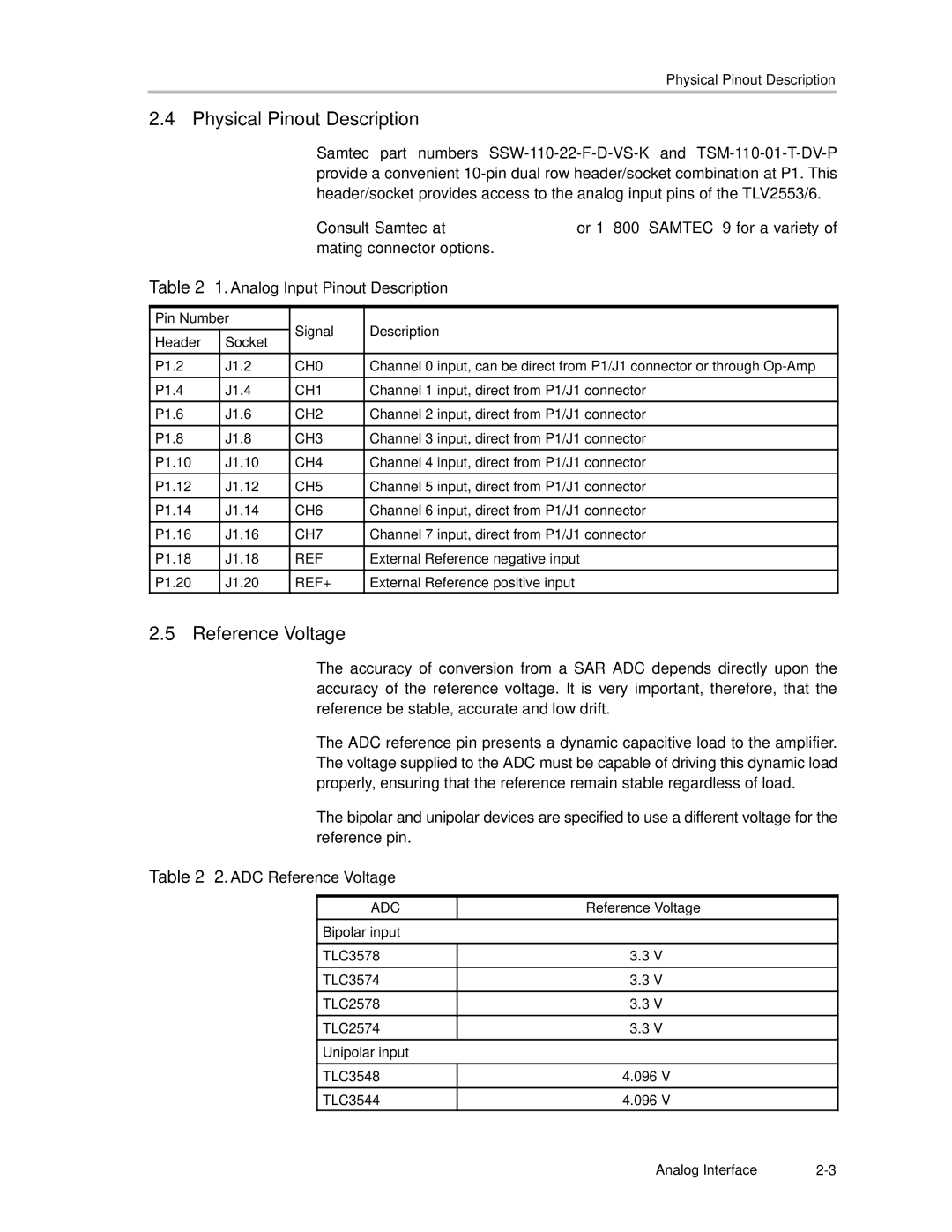TLC3578EVM specifications
The Texas Instruments TLC3578EVM is an evaluation module designed to facilitate the development and testing of applications using the TLC3578, a high-performance, 16-bit analog-to-digital converter (ADC). This evaluation module provides an easy interface for engineers and developers to sample the capabilities of the TLC3578 and integrate it into their own designs.One of the standout features of the TLC3578EVM is its high resolution of 16 bits, enabling precise and accurate digital representation of analog signals. This resolution is essential for applications requiring high fidelity, such as medical instrumentation, industrial automation, and data acquisition systems. The device supports sampling rates of up to 1 MSPS (megasample per second), making it suitable for capturing rapid changes in the input signal.
The TLC3578EVM utilizes a differential input architecture, which significantly enhances its ability to reject common-mode noise, thereby improving signal integrity. This feature is particularly important in noisy environments where precision is critical. Additionally, the ADC includes onboard features like programmable gain amplification, which provides flexibility in handling various input signal ranges and enhances the overall dynamic performance.
In terms of connectivity, the TLC3578EVM supports multiple interfaces. It includes an SPI (Serial Peripheral Interface) for easy communication with microcontrollers and processors, allowing for straightforward data handling and configuration. The evaluation module also features an onboard clock generator for synchronizing the ADC, which simplifies system design and reduces the need for external components.
The module is designed with user-friendly features that make it accessible for both beginners and experienced engineers. It includes comprehensive documentation, software tools, and reference designs that help users get started quickly. The design is also optimized for low power consumption, which is crucial for portable applications, ensuring that battery life is extended while maintaining high performance.
Overall, the Texas Instruments TLC3578EVM is an ideal tool for evaluating the capabilities of the TLC3578 ADC. With its high resolution, fast sampling rate, robust differential input architecture, and user-friendly design, it provides engineers with the necessary tools to accelerate development, reduce time to market, and ensure the performance of their analog signal processing applications.
